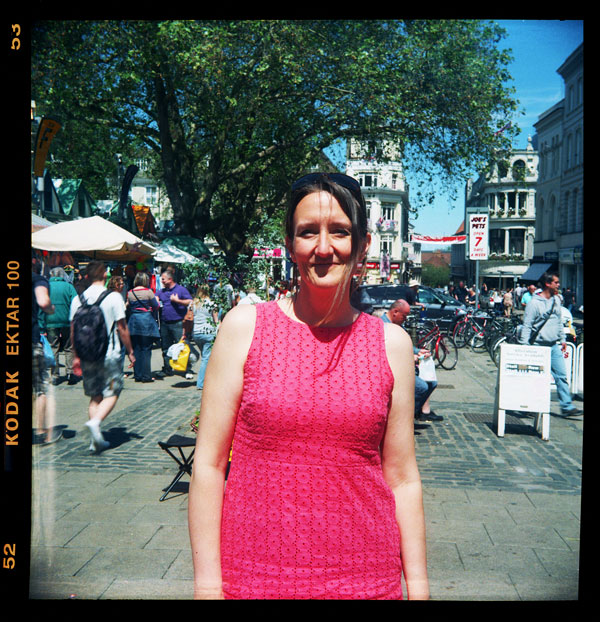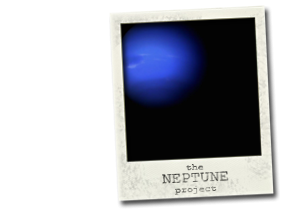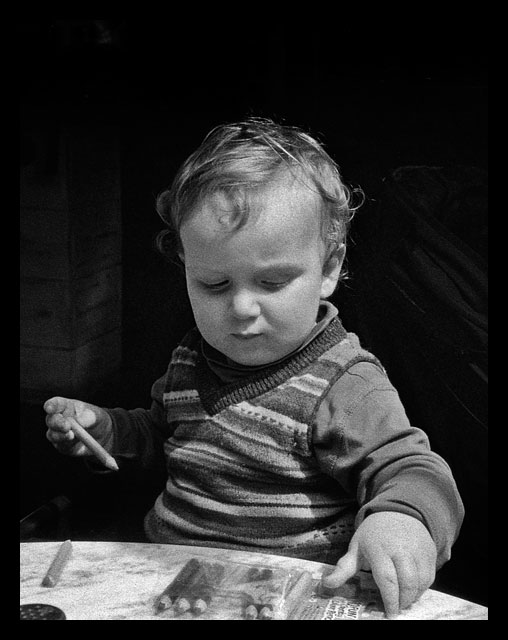Tag Archives: Norwich
Drawing Time
“Drawing Time”
Olympus 35RC / Ilford HP5+
Here is Ted, looking very smart in the tank top that his grandma knitted for him.
Brownie Flash III on Fuji Acros 100
There isn’t an outing in this house that doesn’t involve at least four cameras each (per adult) and one each for at least three of the children… That’s a *lot* of cameras…
And there’s a danger with this modus operandi: one tends to forget which camera does or doesn’t contain film.
I had assembled my photographic equipment for our walk the other day: my Halina Paulette, Bencini Comet IIS and my Lomo Lubitel 2, when another appeared on my ‘pile’ – a Brownie Flash III. I asked Jem if he’d put it there and he told me he’d noticed it had a ’4′ in the red window. Eek! That meant it had film in it and I had no recollection whatever of when or where I had loaded it and taken the first four shots. The only thing I did know (because it was another of our ‘live and learn’ moments) is that it was loaded with Fuji Acros 100… because I had put a sticker on the bottom of it saying so.
So, now that we’re up and running with our own developing, it seemed prudent to finish the film as quickly as possible and get it processed.
Of the mere eight shots that a roll of 120 yields from a Box Brownie, only four and a bit really came out. Despite the fact that the camera had been stored in its original canvas case, the film had still deteriorated and there’s serious fogging throughout, totally destroying two shots, making the third unusable, but the other five came out with varying degrees of success.
My lessons for today, then, are:
- Remember which camera is loaded.
- Make sure you use it till it’s done.
- If you store it for a while without using it, make sure you cover the red window with electrical (or similar) tape.
One of them, however, came out beautifully in spite (or maybe because) of the deterioration. One of our favourite photographic spots:
The Anchor Brewery
Viewed from St. Benedict’s in Norwich
Kodak Duex / Fuji Pro
This shot was mostly an experiment taken with the 1940 Kodak Duex, I was keen to see what it would do with some high-saturation colour film in it. I have discovered that it only really likes somewhat distant subjects (over 8 feet) and good light.
Bullards ceased beer production in 1966 and the impressive edifice is now home to an insurance company. Now that’s dissonance!
1938 Voigtländer Brilliant
 There has been quite a saga accompanying this camera. The Voigtländer Brilliant of 1938 was the world’s first focusing TLR, and as a template it has spawned several copies, most notably the Lomo produced Lubitels (of which we have two), but even if the copies are great – for reasons of lomography – they don’t quite have the pedigree of the Voigtländer. I realised after trustingly putting a roll of Ilford through it that the focusing mechanism was off kilter, so I resolved to try it again using zone focus and a roll of Ektar.
There has been quite a saga accompanying this camera. The Voigtländer Brilliant of 1938 was the world’s first focusing TLR, and as a template it has spawned several copies, most notably the Lomo produced Lubitels (of which we have two), but even if the copies are great – for reasons of lomography – they don’t quite have the pedigree of the Voigtländer. I realised after trustingly putting a roll of Ilford through it that the focusing mechanism was off kilter, so I resolved to try it again using zone focus and a roll of Ektar.
It has taken a while to get the camera this far. I bought it very cheaply last year and like all of the Brilliants, it hadn’t aged especially well. The finder was loose and rusted, the mirror had lost nearly all its silver, the film chamber’s painted interior was flaky and the counter wouldn’t move. I cut a new mirror and replaced it then set to work drilling out the rusted screws from the finder. I carefully removed the prism finder and put it out of the way: it’s a beautiful and precise piece of glasswork after all, then a few moments later heard a crash. I looked up to see that one of the boys had decided to have a look at this rather gleaming jewel, picked it up and promptly dropped it on the floor.
Even though I immediately recognised this as an excellent opportunity to practise mindfulness, I was still devastated. The entire corner of the prism was smashed and at first glance it looked as though the camera was going to have to go for spares.
In the end I cleaned it all up and put it back together anyway and found that because the finder hood covered a good portion of the prism, it was still in fact usable. I wasn’t able to fix the focus because the viewing lens was moving freely through its range in tandem with the taking lens, there was nothing to adjust. For some reason, it just doesn’t match up anymore. I suspected that this might be because the infinity stop had shifted but I checked the film plane for accuracy and it seemed good. So I loaded up some Ektar and took it to Norwich with me at the weekend.
The reason that focusing Brilliants with good glass are so desirable is not so much the focusing ability of the camera, but the quality of the Skopar lens. It operates at a very decent ƒ3.5, and is reputed to have excellent characteristics. The vast majority of surviving Brilliants have much less capable lenses than the Skopar.
Upon seeing a few of the results, I have to agree. This camera takes a great deal of patience to use, it is after all 74 years old now, and has taken a few knocks, both old and new, but it is still a classy performer all the same, as you can see.
Even so, I think I shall be selling it. Even without a focusing viewing lens, a partly smashed prism and a non-functional film counter I think I can get a decent price for it because the lens is gold, and as any serious photographer will tell you, the lens is pretty much the whole story, regardless of its innate style. I love plastic lenses, which cost a few pence, but they give a very different style. If you are looking for accuracy, then the Skopar beats many more modern competitors hands-down.
Plus, I recently bought a Yashica from Pakistan and I cannot really justify owning five TLRs!








